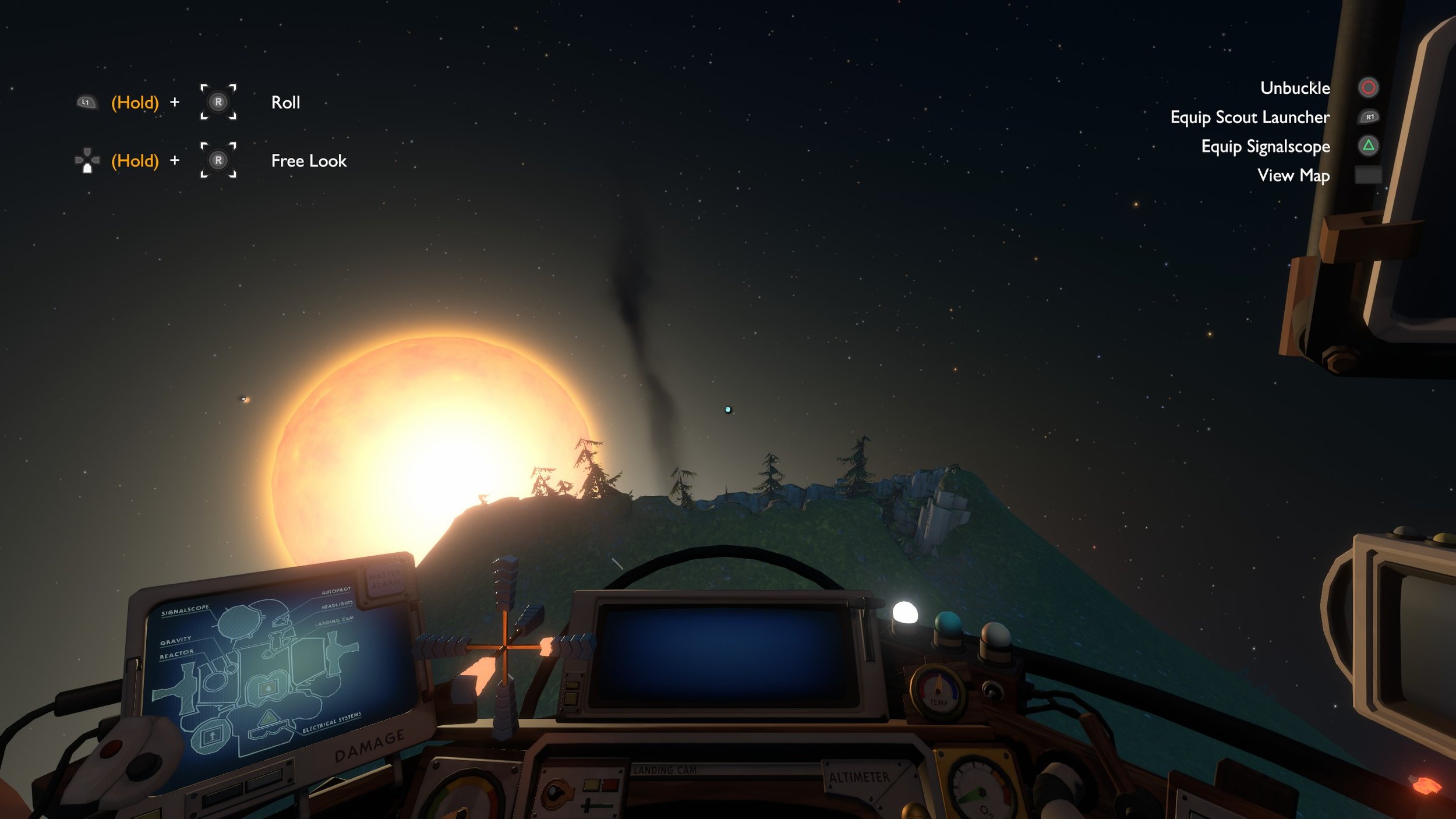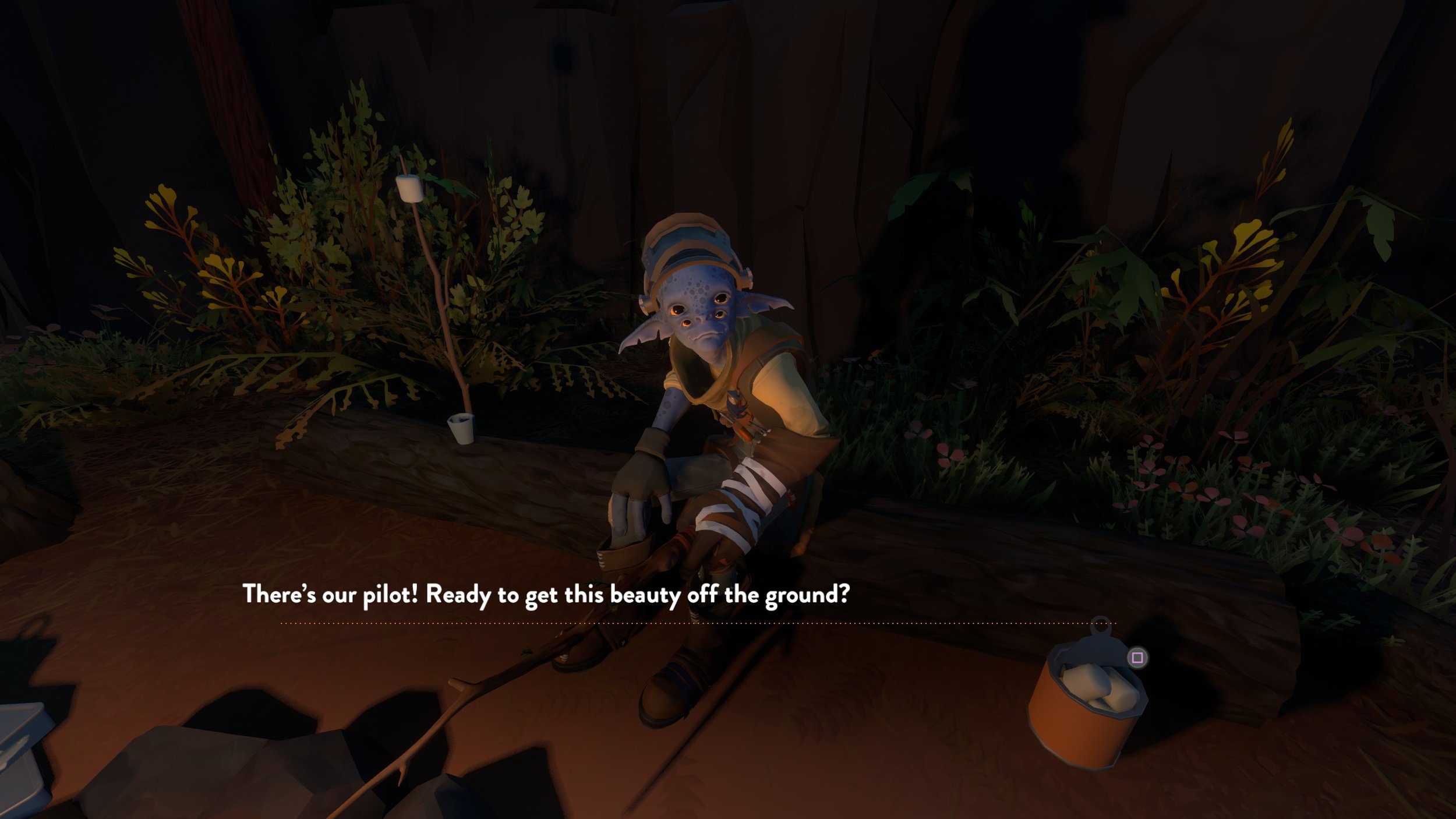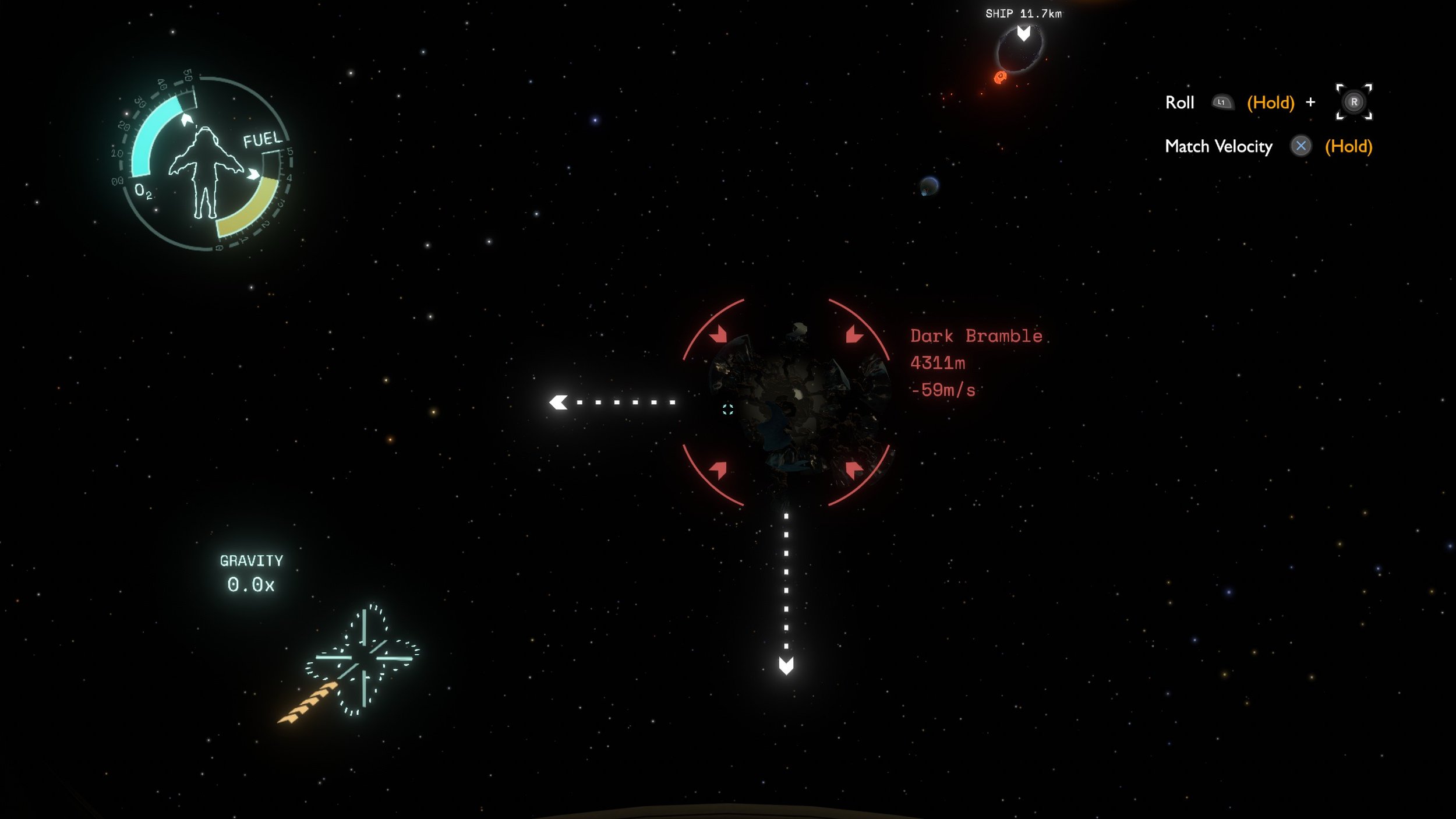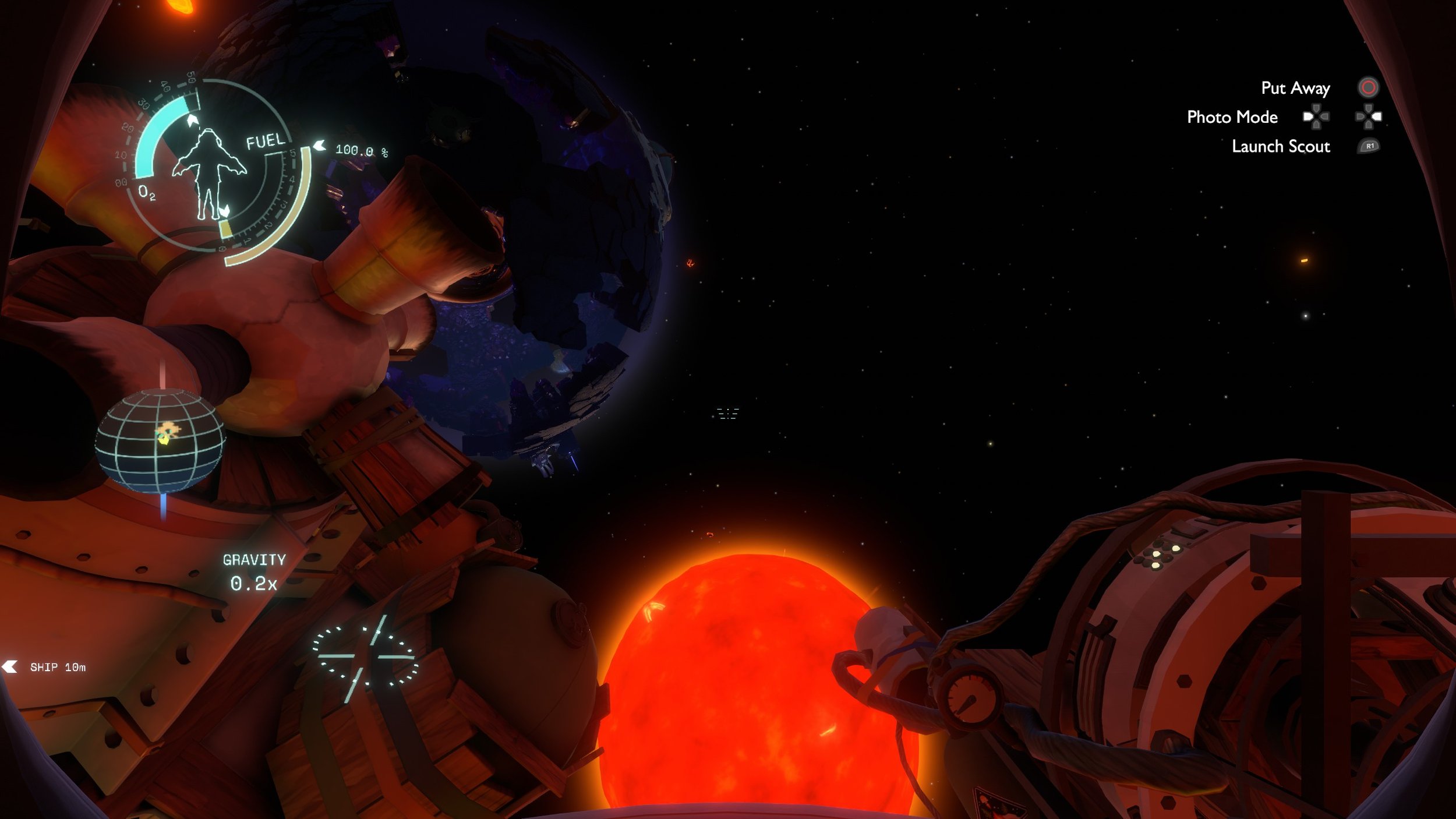The Outer Wilds | Quantum Exploration Done Right
The Outer Wilds has been sitting on my Steam to-do list for quite some time. I knew next to nothing about it, other than it was a game all about exploration. What I truly didn’t expect was to have so many moments in which I found a new mystery to solve. I felt like the game was breaking my brain with its puzzles built around quantum physics while still rewarding me with new secrets to uncover.
Image: Annapurna Interactive
The Short of It
What I’ve Played
14 hours
Version 1.1.13
Pros
Controls feel really solid both on regular terrain and in space
Interesting story and method of telling it
A lot of different things to discover on the various planets
Does not hold your hand
Visual effects are impressive for the style the game uses
Cons
Occasionally, I have gotten stuck on geometry
It would be nice to be able to skip the restart animation
The Rest of It
Story
You are a young, non-human, rookie space explorer from a tiny planet somewhere in a distant solar system. It’s your first day as a true space explorer, and after a quick set of tutorials informing you about certain mechanics of the game, you’re able to lift off in your small space-faring vessel. If you were like me the first time you blasted off the launchpad, you went straight up into the air, watched the atmosphere burn around the edges of the ship’s exterior, admired the beauty of the sun, then smashed directly into the moon and died before you knew what happened.
Image: Annapurna Interactive
Dying, as you quickly learn, is not the end, however. After I smashed into the moon, a cinematic played, showing flashes of my character’s memory in reverse from my death up to the point the game started. Even if you aren’t stupid like I was and manage to avoid smashing your spacecraft into moons, death will find you in The Outer Wilds. And every time, you will see the same sort of cinematic video right up to the point your character wakes up. Why is this happening?
In order to get the launch codes to take off, you have to pass by a statue of a mysterious and ancient species called the Nomai. Upon moving past it, its eyes flash open, giving off a glow. We can assume this is the reason your character is able to come back to life at the same point in time, but the answers are for you to find out in space. The Nomai are a mysterious species that have left countless artifacts all over the solar system, like this one. Therefore, it’s your job to find them and uncover any secrets they may have. There are a number of problems your solar system is facing, including black holes, a strange planet called the Dark Bramble, and the unfortunate issue of your sun going super nova after enough time. So, in your continuous death loop, you’ll have to uncover the secrets of the universe and hopefully stop all the events that threaten your tiny home planet.
Image: Annapurna Interactive
Gameplay
The Outer Wilds is an exploration game, plain and simple; the nature of exploration is built into the mechanics and storytelling of the game. Part of the reason I enjoy The Outer Wilds so much is simply because it takes a hands-off approach to teaching you. Other than the tutorials at the beginning of the game that give you a basic understanding of the controls, the tools you’ll use, and how gravity can affect certain things, the game does not interfere much with telling you how to do something. From the point of lift-off, you are free to go to whichever planet you want, in whatever order you want. When the day resets and you blast off once again, you can return to the last planet you visited to continue digging for clues, or you can just go somewhere else altogether. No restrictions. No guidelines. All that is there for you to follow is the ship’s computer, which keeps track of your discoveries and lets you know if there is more to find in a particular area or if the clues you found in one place might be tied to something that is somewhere else.
In terms of the tools you have available to you, the list of items is pretty short. You have a probe device that you can launch from your ship as well as personally. This can then be used to take pictures as it travels or when it lands, which is useful if you’re heading into dangerous territory or if you’re trying to solve some puzzles. You also get a sound wave detector that can be used as a method of giving yourself some direction on where to go next. You can toggle the frequency, and if something is unidentified, you can follow it until you reach the destination and log it in your ship’s journal. Of course, you also have a space suit that allows you to move around in space and on other planets—leaving your ship without your suit is a quick and easy way to reset the day if you’re anywhere but your home planet. The suit comes equipped with an oxygen tank that lasts a long time without having to refuel, as well as a jetpack that is fundamental in maneuvering around the different worlds. Since gravity can be light or intense, depending on where you are, getting used to jumping and using the jetpack is mandatory. Luckily, the controls of The Outer Wilds are another place in which the game excels.
As soon as I started playing, I realized how well the game controlled. Everything is smooth and responsive. Jumps don’t always require precision with your jetpack available, but there are plenty of instances in which you need to properly control your character or ship in ways that require a fair amount of nuance. If you miss your jump or overshoot your engines, you can very quickly find yourself plummeting into a black hole, falling into the sun, or having to spin around and fire your engines to hopefully course correct before crashing into something else. Once you’re out of range of any source of gravity, movement through space is as you would expect, and you have to compensate if you’ve just been hitting the engines the whole time. The game does automatically fly you back into the solar system if you start going too far, but you’re otherwise free to explore as recklessly as you like.
Image: Annapurna Interactive
The real fun of The Outer Wilds, however, is just solving the various riddles throughout the game. You learn different mechanics regarding the Nomai technology through your own curiosity, which can then lead to the eureka moments that make the game so special. There are countless journal entries to find on each planet that lead you to mysteries on other planets. There are a few unique puzzle sequences that make you relearn some mechanics in interesting ways. There are things you can do that you won’t do at first, but they become instantly obvious once you realize it’s possible. I know I’m being vague, but if you want to know how to do something, you can read a walkthrough, which I don’t recommend. This game really was designed for you to fumble around and figure things out on your own, so reading a walkthrough would likely ruin the intended experience. It might even make you feel dumb for not figuring it out on your own because the design of this game, while obtuse at first, is relatively simple and straightforward. You just have to be patient and spend enough time in it to solve all the riddles, and you’ll be rewarded for it.
Presentation
The easiest way to sum up the presentation of The Outer Wilds is that it is doing a lot with very little. It has a simple but pleasing aesthetic. The textures are relatively plain, but that does not detract from the style at all. The color and lighting make the different planets and the solar system vibrant and interesting to see. The first time you go below the surface of the Neptune-like planet’s atmosphere, it’s an exciting experience. Likewise, if you go into the depths of Brittle Hollow, the rocky planet that has a molten moon circling it and shooting down meteors, you’ll also likely do a bit of a double-take. That planet, in particular, is a spectacle beneath its outer crust because things explode and break frequently, showering the area with sparks and color. And if you happen to look down, well, you’ll see a neat visual trick that is always a little jarring but very cool.
Image: Annapurna Interactive
In addition, the music of the game is very good. Again, it’s simple with some atmospheric music either through a few bluegrass instruments or through a synthesizer that has some mellow tones. It’s not big and bombastic. Instead, it’s rather calming and serene, meant to keep you engaged with the game without feeling stressed out. The only place in the game where you are meant to be tense is in the Dark Bramble, which has the actual enemies in it. There, the music changes to an ominous hum, letting you know that danger is all around. Aside from that one location, The Outer Wilds is meant to be a chill, relaxing experience as you discover the mysteries of the solar system. Even in the moments leading up to the supernova reset, it is mellow enough to make you feel resigned to your fate.
TL;DR
The Outer Wilds is a game I’m glad I was able to play without having it be spoiled for me. This game is pure discovery, and you do yourself a disservice if you read too much about it before playing it for yourself. It’s doing a lot with very little in terms of its presentation and mechanics, and even if you don’t really get attached to the story it tells through dialogue and the relics you find, solving other puzzles and finding secrets is still extremely satisfying. It’s not something I would give to someone who wants to play something fast-paced or intense, but I can easily recommend it to those who just like to explore games at their own pace and solve puzzles. Hopefully, you won’t get as caught up in the game as I did and make the same mistake of slamming your ship into the moon the first time you blast through the atmosphere.













